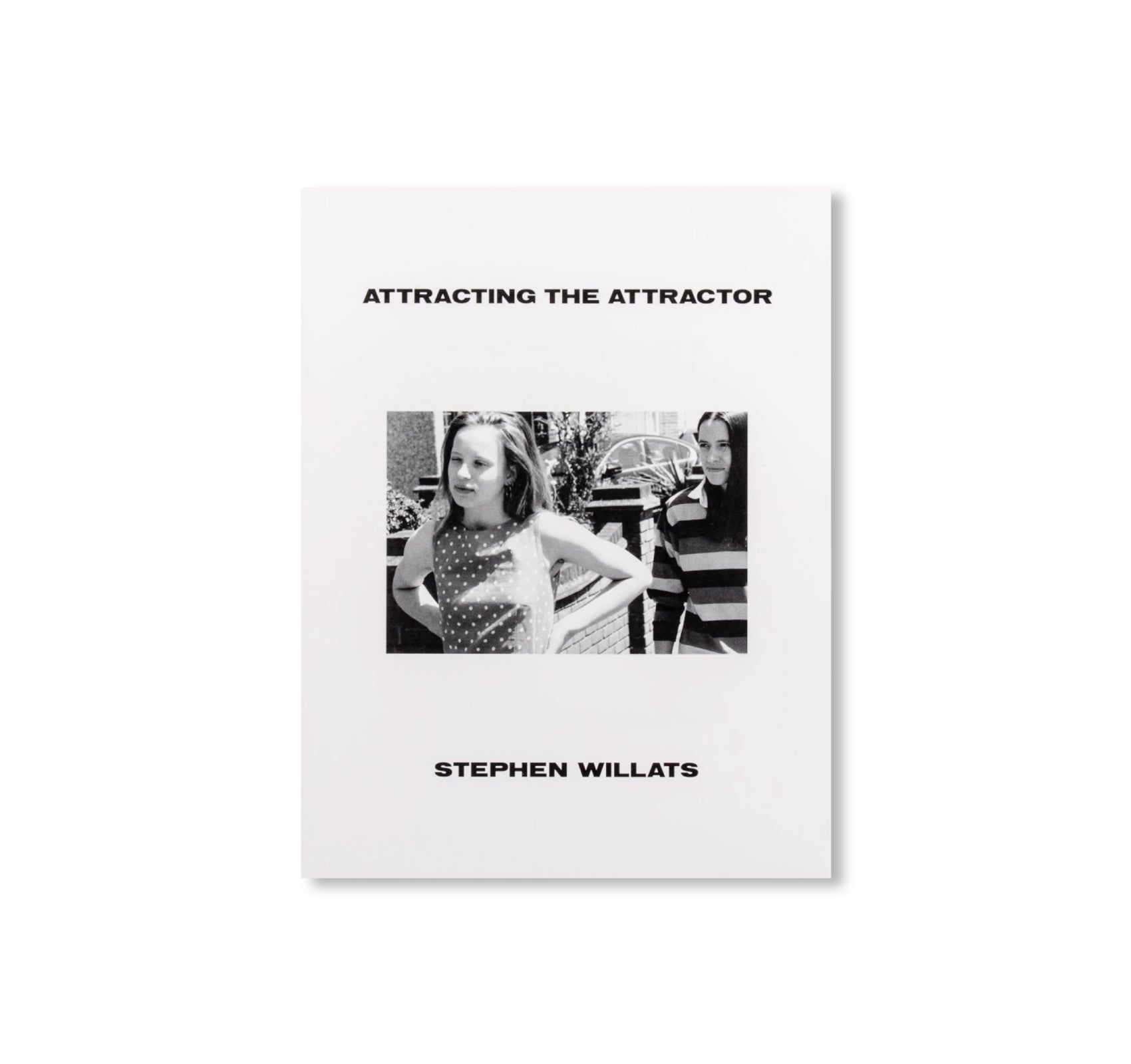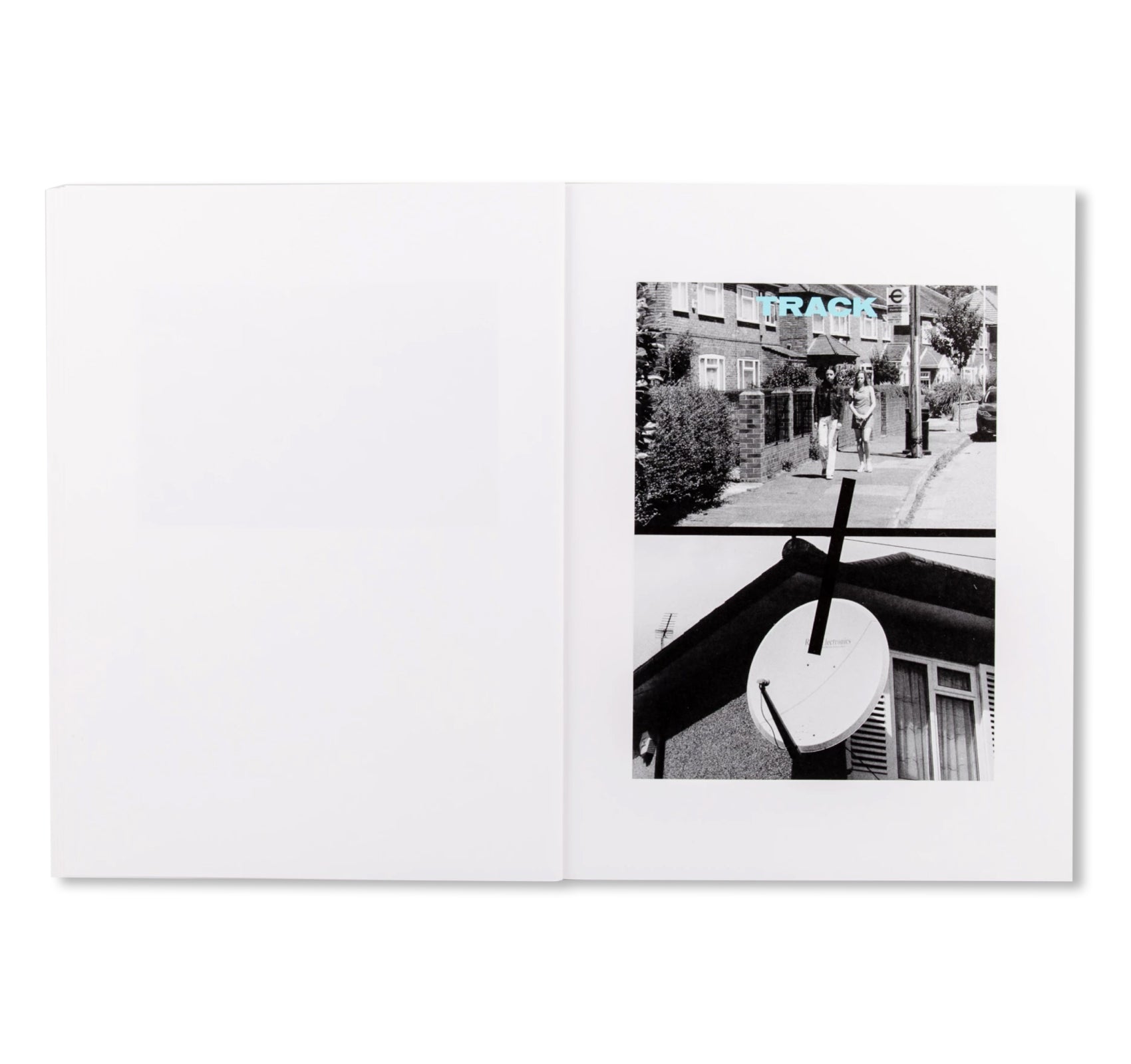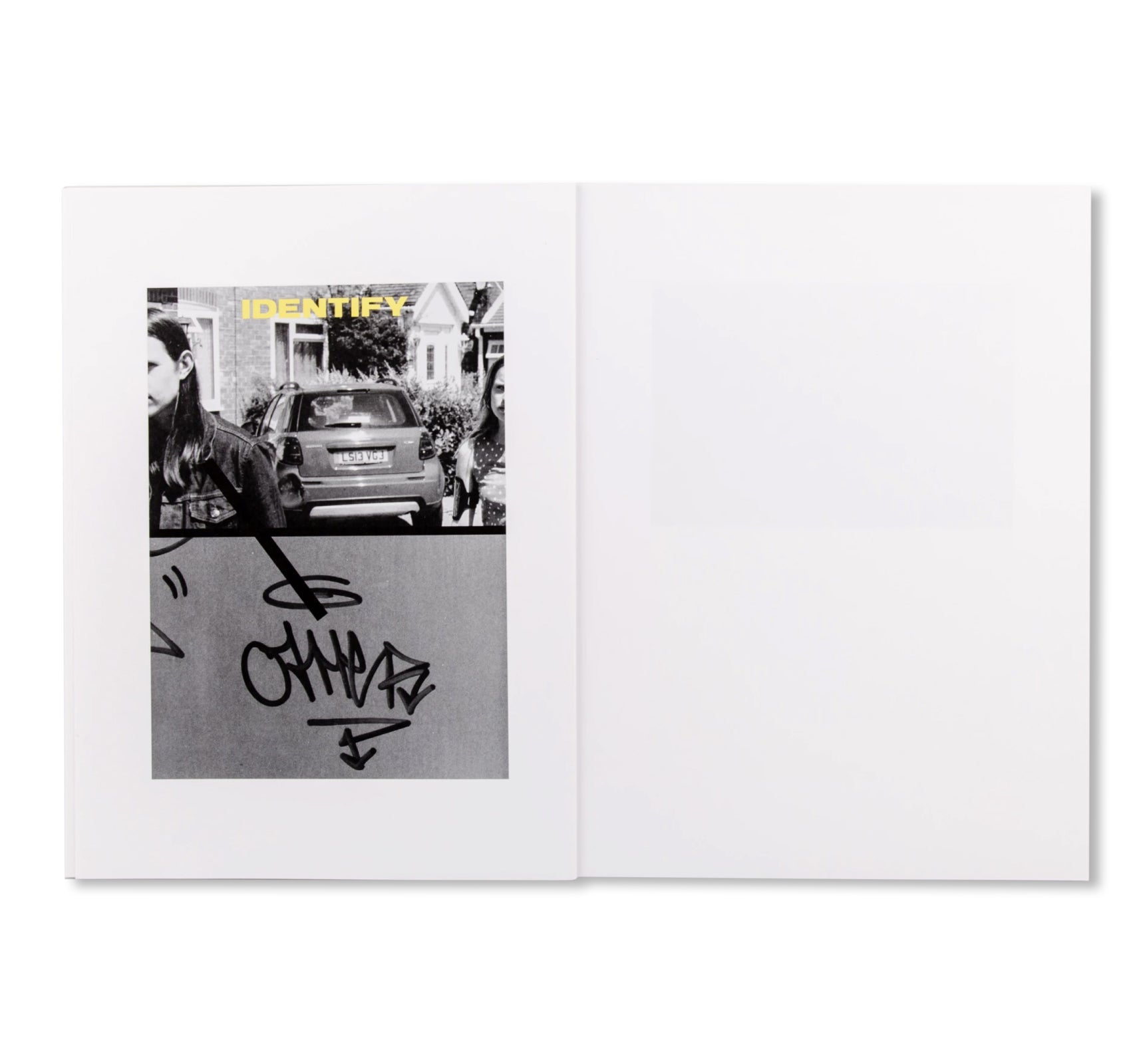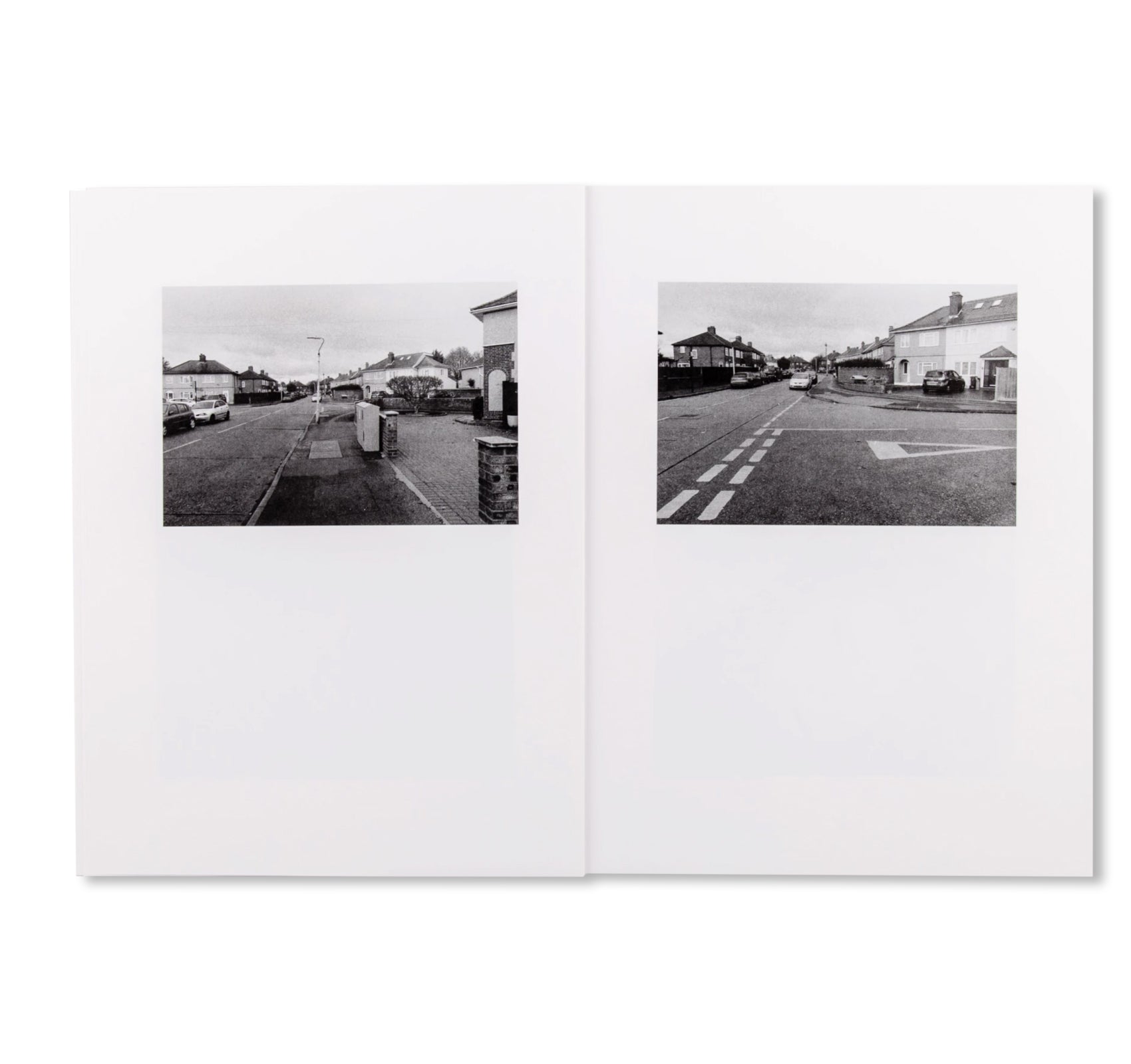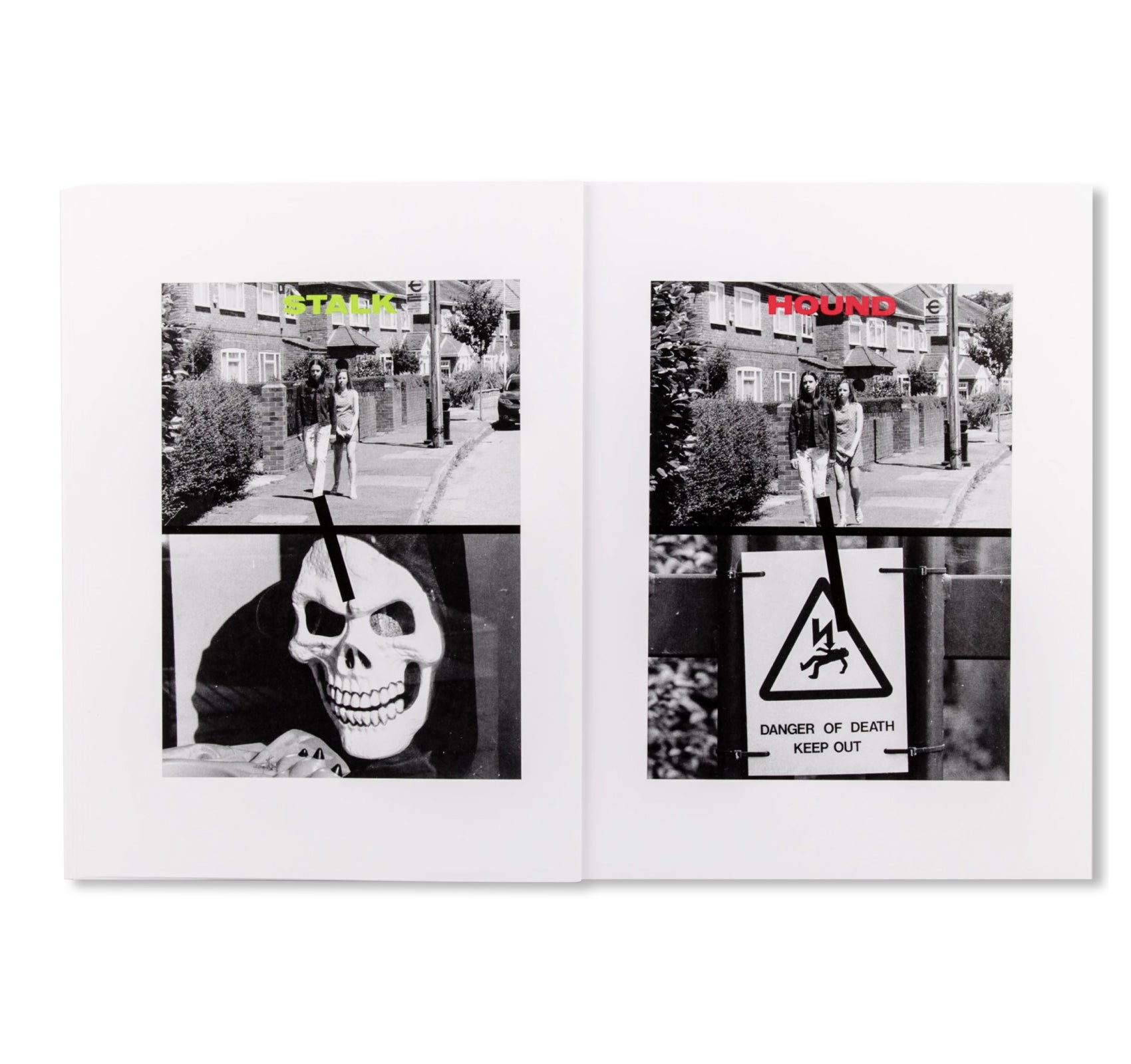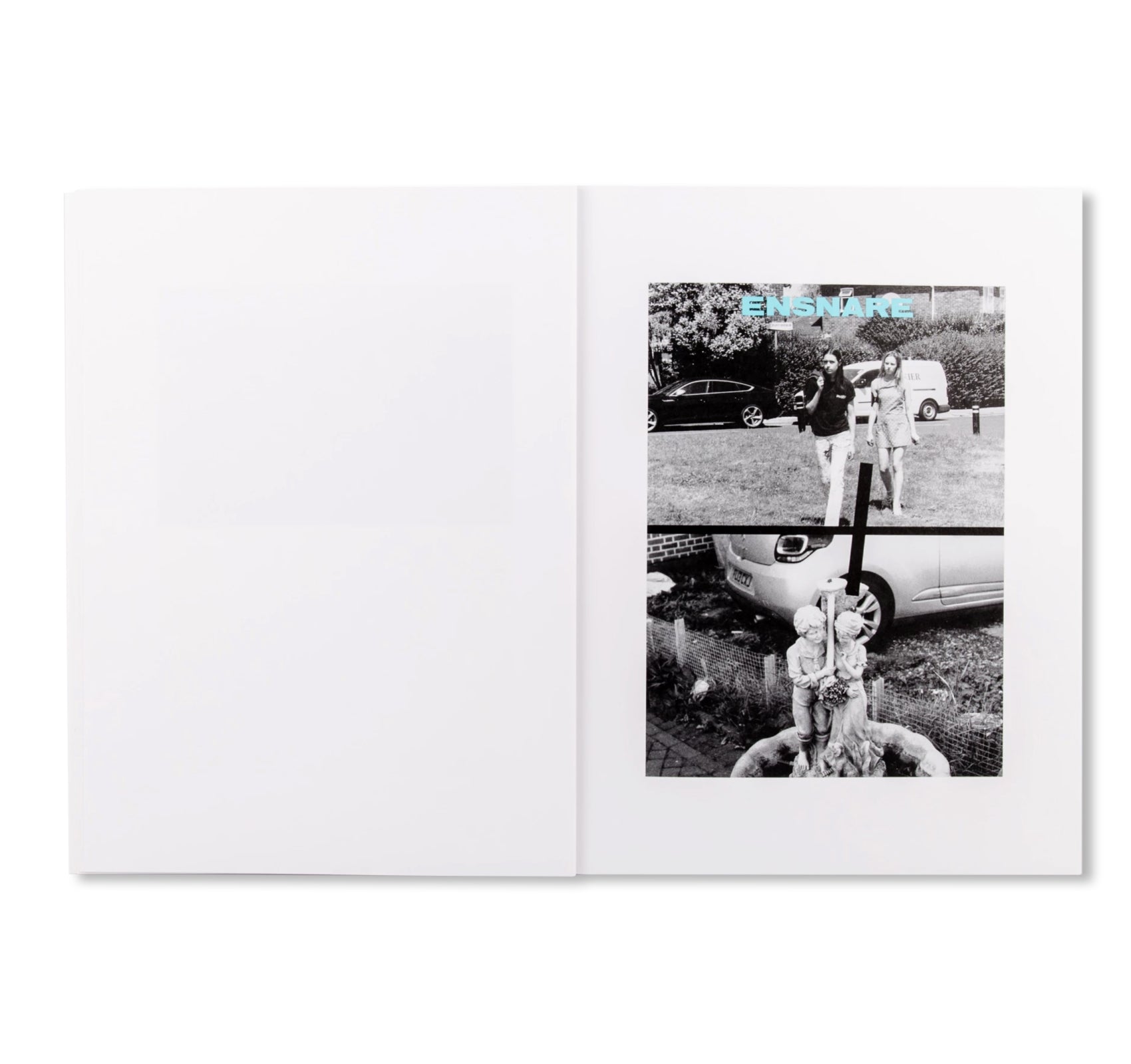ATTRACTING THE ATTRACTOR by Stephen Willats
イギリス人アーティスト、スティーブン・ウィラッツ(Stephen Willats)の作品集。グレーターロンドンの街ヘイズにあるイェディングで2018年に撮影した作品、テキストと、街中で見られるグラフィック的な要素を収録。写真家のステファン・ウィラッツ(Stephen Willats)は、昔から良く知っているこのエリアを「平々凡々とした生活の舞台として作られた標準的な場所」とみなしてきた。このプロジェクトでは、この辺の住宅街の通りを歩いている二人の女性を撮影した。前後に並んで歩き、お互いに触れることも話すこともないが、二人の間に何らかの関係があることは明らかである。彼女達のつかず離れずの微妙な距離感は、都市に住むことからくる精神的な体験と社会的な状態の表れに他ならない。彼女達はお互いを知っている訳でもなくが、見も知らずの間柄でもない。
ATTRACTING THE ATTRACTOR presents photographs made in Yeading (Hayes, Greater London) in 2018, along with text and graphic elements. Willats has long been familiar with Yeading, conceiving of it as a normative built space that serves as a setting for typical, ordinary, life. For ATTRACTING THE ATTRACTOR, Willats photographed two women walking along a residential street in the area, one behind the other, never touching or speaking, but clearly ‘in relation’. Their tempered interaction articulates a psychic experience and social condition characteristic, perhaps, of urban habitation. They neither know each other, nor are they completely unknown to each other. Willats writes: 'The Attraction Of The Attractor is a key concept in our understanding and perception of relationships between people in Western social reality. For it centres on how we possess another person psychologically, how we project our framework of references onto a stranger and, in effect, create that person as an essential part of this possession. When we encounter the Attractor we know they have come from somewhere and are going somewhere, but we do not need to know origins and destiny, for we possess them while they occupy our space and attention as a time-based encounter between the possessed and the possessor, the attractor and the attracted, while traveling in and out of our consciousness. Yeading in Hayes represents, symbolically, the reality within which most people live, its suburban semi-detached 1950s housing presents a visual normality for the enacting of the Attraction Of The Attractor. Two models walk around the crescent-shaped streets, one following the other, standing back about one metre or so, the model following is staring at the back of the front model’s head whilst speculating about her identity, mood, attitudes etc. There is no good or bad, beginning or end to this work, we just witness to a section of a process in time, as they enter our consciousness and as they have left.’
